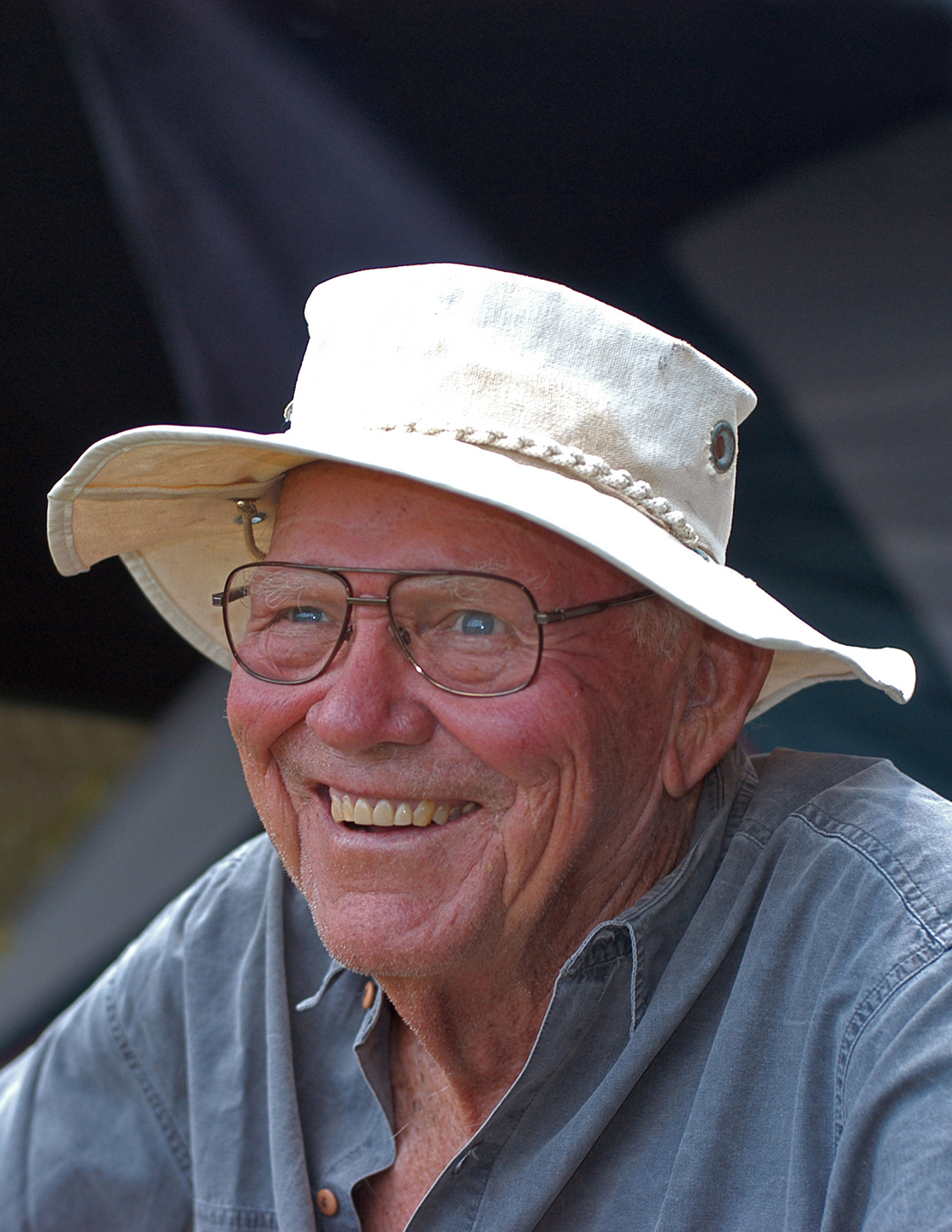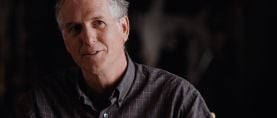
In Memoriam: Jack C. Couffer, ASC (1924 - 2021)
Born in Upland, California, on December 7, 1924, the Oscar-nominated cinematographer died on July 30, 2021 at the age of 96.
Growing up near the Glendale foothills just outside of Los Angeles, Jack Craig Couffer became fascinated with natural history, archeology and paleontology, and raised all kinds of animals — from snakes and skunks to coyotes. “I have a built-in fascination with animals,” Couffer described in a 2011 American Cinematographer profile. “I was given my first still camera at the age of 11, and I stalked birds, squirrels and rabbits in the hills and felt great if I got close enough with my wide-angle lens to see that I’d captured a recognizable creature. I’ve felt the same urge ever since.
“The niche I have happily occupied has been predominantly films with humans interacting with animals, Well-trained animals are very good at hitting their marks.”
During his high-school years, Couffer worked as a student assistant at the Los Angeles County Museum of Natural History in several departments. It was on his 17th birthday, during a museum collecting trip to the Channel Islands off the coast of southern California, that Japan attacked Pearl Harbor, Hawaii. The museum party was marooned for two weeks on Santa Rosa Island because all west coast ports were closed due to security concerns.

At the museum, Couffer’s mentor, a bat expert, was approached by the War Department to research and develop a secret project that would use bats as carriers of miniature incendiary bombs. As part of this development team, Couffer was drafted into the Army a few months before high-school graduation. He later wrote of this adventure in one of his 11 books, Bat Bomb. World War II's Other Secret Weapon, published in 1992.
After the war, Couffer worked for a few years as a commercial fisherman and crewed on yachts. In 1947, he married Joan Berger. Shortly thereafter, while living aboard their schooner, he enrolled at the University of Southern California on the G.I. Bill to major in zoology, however, “I found myself next to a student named Conrad Hall in a make-up English class. The idea of a career in the movie business wasn’t even a spark in my head, nor in Conrad’s. He hoped to walk in the footsteps of his father, a well-known writer. Just for kicks, Con suggested that we audit a class in the new Department of Cinema Arts. We sat in on one lecture by [department head] Slavko Vorkapich and were seriously hooked.”
Now a film student, Couffer collaborated with Hall and Marvin R. Weinstein on a 16mm class project, Sea Theme (1950).
Couffer described the genesis of the project: “I was living aboard my boat while attending USC, and Conrad Hall and another student [Weinstein] and I decided we’d put the ideas we’d learned in class into a film. We bought a used Bolex and some outdated film from Bob Gottschalk, who ran a hole-in-the-wall camera store, and then we set sail for Catalina during the summer break to make a film we’d call Sea Theme — no dialogue or color, just a beautiful schooner, sails and seas and a score of classical music.” (Gottschalk would later co-found Panavision.)
Sea Theme became one of 10 winning shorts in first-annual American Cinematographer Awards for amateur filmmakers. As noted in AC, May 1951:
M.R. Weinstein, J. Couffer and C. Hall have collaborated in the production of a thematic and quite pictorial account of a young couple with a sailboat at sea. The variety of moods are enhanced by the carefully chosen musical score, which has been combined with the film… Consistency of photographic quality is a highlight, and the sound recording is quite professional. The picture was filmed with a Bolex H-16 camera and a variety of four lenses.
Its outstanding visual qualities helped facilitate selling Sea Theme to a television station. “The buyer financed a series,” Couffer said. “We thought we had the world by the tail, formed a company, Canyon Films, and became entrepreneurs while still in film school.”
In describing some of his key artistic influences, Couffer described, “I looked to the representational painters of the so-called California School, watercolorists of the 1930s and early 1950s — Rex Brandt, Tom Craig, Vernon Nye and Emil Kosa. I loved their use of color and composition. In those days, when mist-shrouded scenes, focused subjects seen through fuzzy foregrounds, and sun flares all went automatically into the trash, I learned from New York cameraman Larry Madison about the inherent value of these often stunning ‘mistakes.’’
At USC, Couffer also became friends with practicing filmmaker/instructors including Irving Lerner, who employed Canyon Films as the production team on an indie suspense feature shot in South Carolina entitled Edge of Fury (1958). All three Canyon partners are credited with the cinematography and the picture was released by United Artists.
With his abilities as a naturalist and filmmaker, Couffer soon found a position at Walt Disney Studios, where he worked for more than a decade, often simultaneously in the roles of writer, director, cinematographer and producer on many of the early True-Life Adventure series films, making more than two dozen shorts and features.
“The niche I have happily occupied has been predominantly films with humans interacting with animals, Well-trained animals are very good at hitting their marks.”

One of the great experiences of his early career was a Disney assignment for which he and Hall sailed to the Galapagos Islands aboard a 30-foot ketch, lived off the land and filmed wildlife for nearly a year. This resulted in the nature documentary Islands of the Sea (1960), which earned an Academy Award nomination for Best Short Subject, Live Action.

This is but one of the chapters in Couffer’s book My Boss Walt: Making the Disney Wildlife Shows, published in 2019.
After his days filming for Disney, he wrote, directed and filmed second unit, or produced dozens of feature or television films that showcased or included animals, such as the 1974 series Born Free.
One of the most beloved of these projects was the 1973 feature Jonathan Livingston Seagull, directed by Hall Bartlett, for which Couffer earned an Academy Award nomination for Best Cinematography.
“There were some very tricky things with this film concerning bird training and handling,” Couffer told AC (Dec. 1973). “Because of my background, I worked very closely with the trainers. In this area Hall Bartlett gave me free rein, so I was something else in addition to cameraman. There were a lot of people who didn't think it would be possible to get gulls performing some of the aerobatic feats that the script required, and great credit goes to the trainers for pulling this off.

“Also, curiously enough, some of the· best of the dive shots and other aerobatics were the natural behavior of wild birds. One wouldn't imagine that seagulls really do some of those things, but under exceptional circumstances they do. It was my experience as a naturalist that put me at an advantage in knowing· under what circumstances I might find the gulls behaving in extraordinary ways.”
“There have been some very complimentary comments about the photography. I'd like to say very honestly that a great deal of the credit is due to Hall Bartlett who was the producer and director. He was very demanding, uncompromisingly so, and I think I would have been tempted to settle for less in many cases if it hadn't been for this attitude of pressing for the best. We had time and the budget to do this — a luxury which I haven't always had — but it was Hall reaching out for quality that really made it happen.”
Couffer’s other feature projects include Never Cry Wolf, Out of Africa, The Darwin Adventure, Ring of Bright Water, The Milagro Beanfield War and many others. His final assignment was The Ghost and Darkness (1998), directing second unit in South Africa and shooting second unit in Kenya.


Couffer was a member of the Writers Guild, Director’s Guild, and the International Cinematographer’s Guild. He was recommended for ASC membership by Hall and Haskell Wexler. Of his Society membership, he noted, “I am proud to be a member of such a respected group, and at the same time sad not to have contributed more. My only excuse is that I’ve been based outside the country, hiding under a mossy stone, for most of my career.”
Of note, Couffer spent more than 30 years largely living in Kenya, with companion Marchesa Sieuwke Bisleti until her death in 2005. He then shared his life with Jean Allison, whom he had first met decades earlier as an actress while shooting his first feature, Edge of Fury.
Couffer is survived by Allison and his son, Michael, who is a wildlife photographer, naturalist and biological field consultant based in Corona del Mar, California. He also collaborated with his father on several books.






